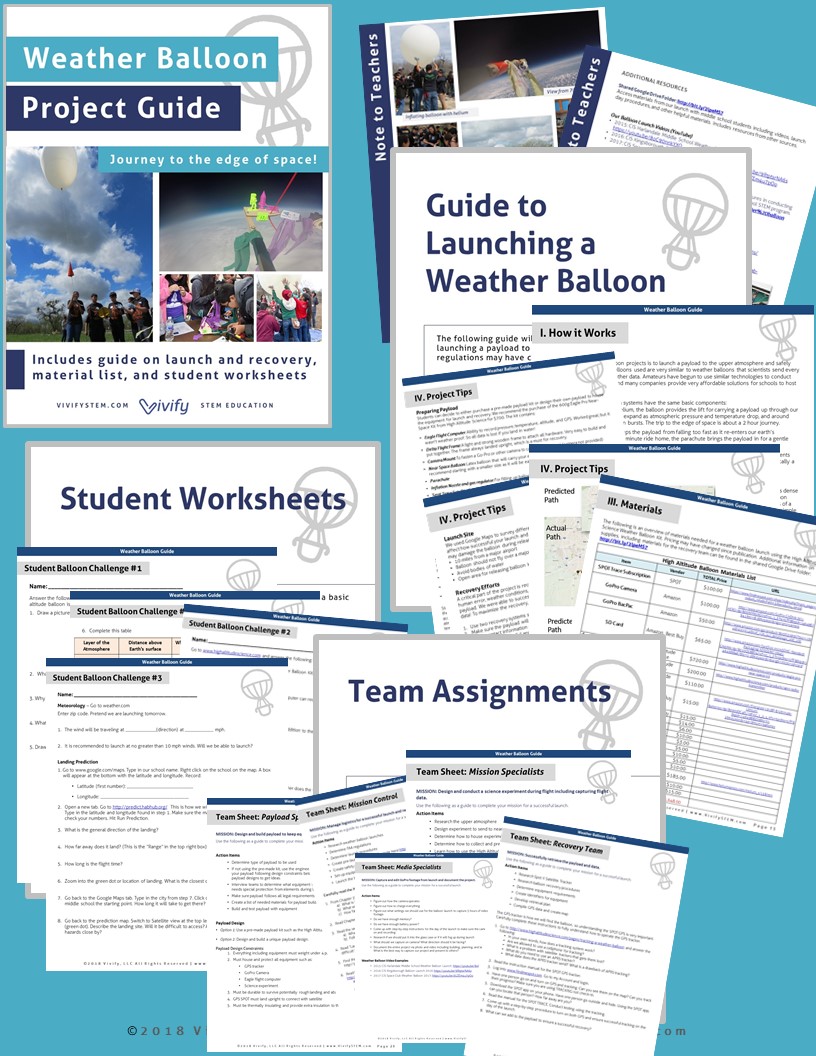How to Launch a Weather Balloon: Ultimate STEM Challenge
Written by Natasha Wilkerson
Originally Posted: June 22, 2018
Updated: March 2025
Take your students on an unforgettable journey to the stratosphere! What can be more exciting than launching a balloon to the edge of space and seeing footage of the Earth from above? A weather balloon project (also known as High Altitude Balloon or HAB) involves designing a payload and using a helium balloon to send an experiment up to 100,000 feet into the stratosphere!
Based on three years of successful weather balloon experience with over 300 middle school students, we created a full guide that helps students design a payload, select an experiment, launch, and recover the balloon from a 100,000-foot journey to the edge of space! Check out our ballooning adventures in previous blog posts here.
For this project, students work in teams to understand the science behind the balloon launch, design and build a scientific payload, select the launch site using predictive modeling and weather conditions, launch the balloon, and analyze the collected data. This is the ultimate real-world project. Just substitute “student” for “scientist”, and this is exactly how scientists in industry and government labs send experiments into the atmosphere!
Tackle the ultimate STEM project with this all-inclusive classroom guide to launching a weather balloon!
Our most recent weather balloon launch occurred in December 2017 through my work with Communities In Schools of San Antonio. The launch was the culmination of two months of preparation learning about the balloon flight and preparing equipment. Onboard the payload, students sent two GoPro cameras to record the aerial view of the flight, a GPS tracker for recovery, a flight computer to measure temperature, pressure, and speed, and a 3D-printed model to represent each school.
On Friday, December 15th, 90 Harlandale ISD middle school students traveled to VZ Environmental in La Vernia for the launch. Despite a chilly day, students calculated lift requirements, filled a latex balloon with helium, and prepared the equipment. The final countdown ended with the balloon being whisked upward as students cheered! All the excitement was broadcast live by KENS5 meteorologist Paul Mireles and featured on district media. During the event, students also met with the founder of VZ Environmental for a unique look into her journey in the oil and gas industry. Read more here.
After the launch, two recovery teams chased the balloons using the GPS trackers. Balloon 1 traveled 120 miles northeast to Phillipsburg and reached almost 70,000 feet capturing amazing footage of the horizon. Balloon 2 used a larger balloon and traveled 150 miles to Magnolia. The balloon reached an impressive 103,600 feet! With some help from local residents and a little cow herding, the balloons and data were successfully recovered to be analyzed by students. What an unforgettable adventure!
Below are highlights of the launch, and you can check out media coverage here.
Check out our video below about launching a weather balloon!
Weather Balloon Launch: STEM Engineering Project Guide
Tackle the ultimate STEM project with this all-inclusive classroom guide to launching a weather balloon PLUS links to a shared Google Drive folder with TONS of extra resources! This guide includes an hour-long training video to help you visualize exactly how to complete this project with your class!
Grades: 6-12
Teaching Duration: Semester
PLEASE NOTE: This project requires a minimum of $1700 in materials, including this 600g weather balloon kit (or this alternative kit). A complete material list is provided in the product.








